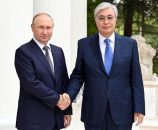Abdullah Mustafvi
Prosperous future of Pakistan largely depends upon economic and political stability sufficiently supplemented with secure social dynamics. CPEC provides a ray of hope as the mega project has the potential to render solid base for economic progress. CPEC should not be taken just as a road link between China and Pakistan. In fact, vision behind this project is spread at a larger canvas and aims at connectivity of major regional players at appropriate future moment. Though, present regional scenario is not favourable for a greater economic connectivity but looming crisis of unemployment, lack of basic amenities and multiple socio-economic challenges will ultimately push the regional players towards CPEC. This view may appear as highly optimistic at this stage but cannot be termed irrational. Challenges related to CPEC are neither simple nor restricted to regional stake holders. Pakistan has to deal with a web of complicated issues both at internal and external fronts. Scenario at internal front is dominated by multiple challenges related to security, governance, policy making and political consensus. CPEC project confronted a political consensus crisis right from the outset. Federal government took few extra ordinary steps in the form of APC headed by PM Nawaz Sharif and number of briefings as well as joint consultative sessions with political leadership to counter the criticism on route controversy. Dust has settled over this issue to a great extent but still a lot more is demanded by the opposition. Gilgit Baltistan government’s demands do merit a thorough analysis for due recognition. Balochistan presents a long history of ill governance, foreign sponsored violence and political mishandling. Public discontent has reached to vertex as all the inflammable weak spots are being vigorously fuelled by global and regional stake holders. Internal challenges start right at Gilgit Baltistan which is the initiating point of CPEC and take more complicated shape till it reaches the finish point Gwadar port in Balochistan. Efficient political management and transparent governance is the key to overcome the issues at internal front. Concrete steps of Armed forces against foreign sponsored terrorism remain a major sigh of relief for government. Turbulence in Balochistan is gradually turning into calmness. Arrest of RAW terrorist handler Khalbhoshan Yadev, on one hand exposes Indian designs and on the other hand reflects seriousness on part of Pakistan .
Successful completion of CPEC will provide a strategic opening to China and politico-economic stability to Pakistan. Both developments will not suit to USA and India understandably with reference to China and Pakistan respectively. Baseless criticism is being spread about China’s quest for regional dominance against USA by stepping on Pakistan’s neck . In fact, USA has spoiled the regional dynamic through persistent violent interference in Afghanistan. India cannot resist to join hands with USA on anti sino-Pak agenda. External challenges turn more complicated once we analyze the role of Iran. Gwadar port is a tough competitor to Chahbahar port and Indian heavy funding to this project coupled with a railway line destined to Bamian is a clear indicator of regional grouping. It is a game of national interests. At present, Pakistan is confronted with hostile neighbours India, Afghanistan and Iran. Afghanistan’s connectivity with CPEC and central Asia will prove a great step for regional stability. Competition between Chahbahar and Gwadar can be converted into fruitful connectivity. Will this greater regional connectivity be acceptable to USA? Will India allow Pakistan to gain status of a key regional connector? Problem rests with USA and India. China is focused on wider national gains but moving forward through mutual infrastructural development. On the contrary, USA is pursuing her goals through brutal use of force. These are challenging times for Pakistan and a delicate application of collective wisdom must be opted to deal with the situation.


